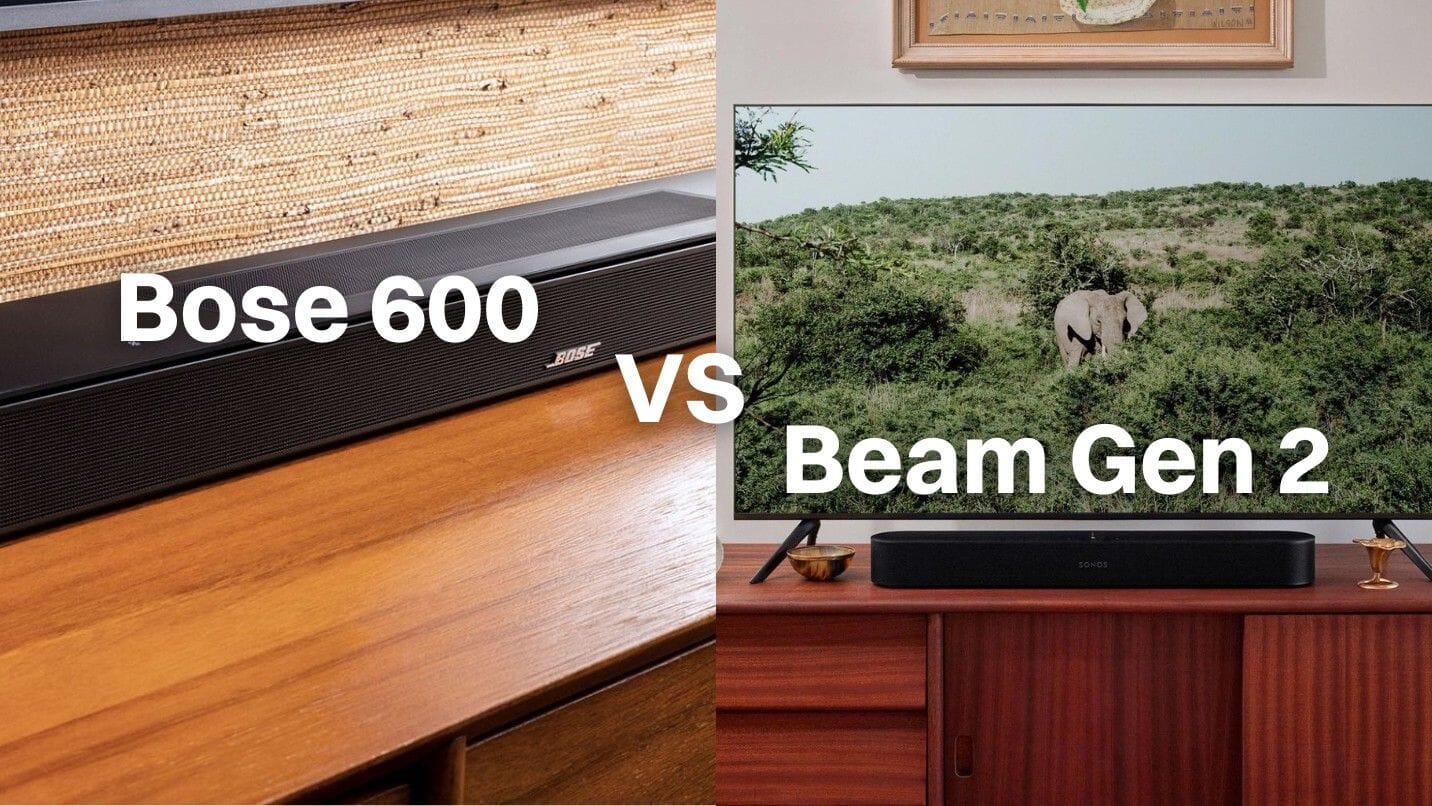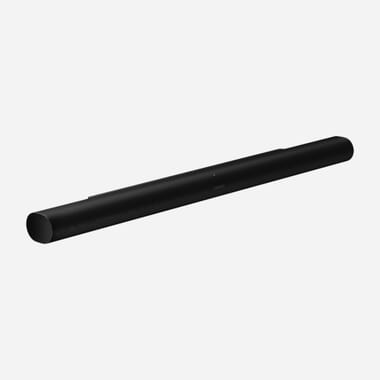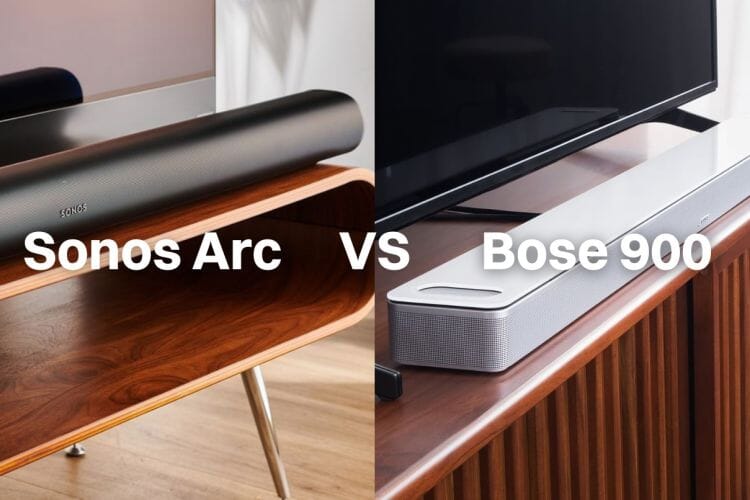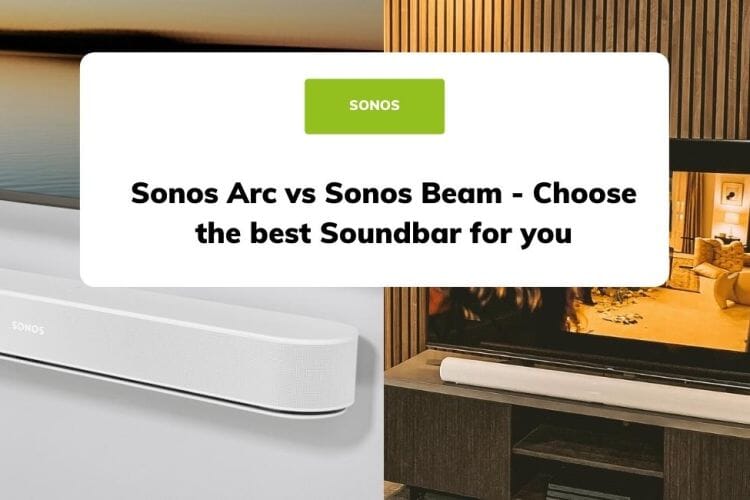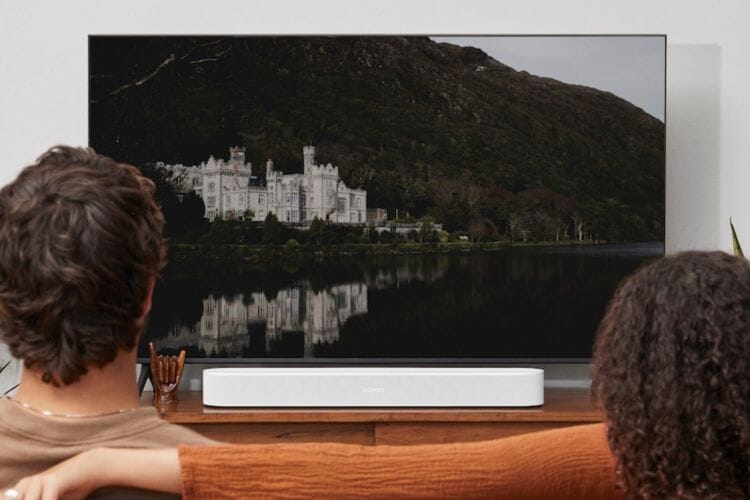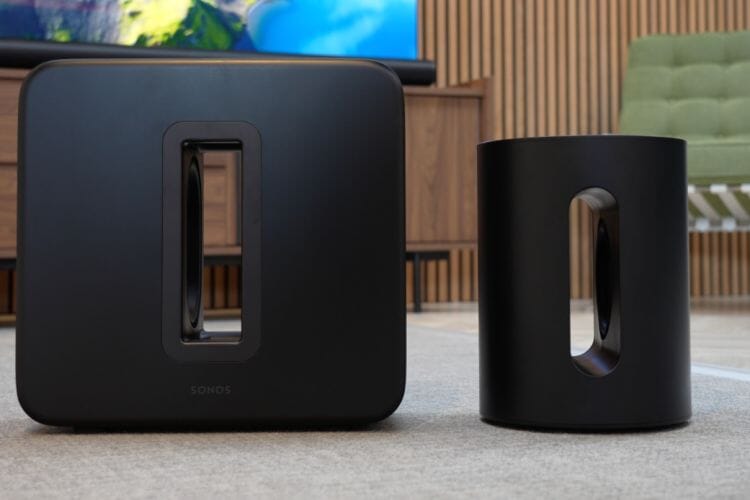Bose Smart Soundbar 600 vs Sonos Beam (Gen 2): Which soundbar should you buy?
The Sonos Beam (Gen 2) and Bose Smart Soundbar 600 are both Dolby Atmos enabled soundbars nearing the £500 price point and both are big contenders in the compact soundbar market. The question is, which should you be spending your money on?
Well, If you haven't got much time on your hands, we've made a full comprehensive comparison video over on our YouTube channel for you to watch instead.
Watch our Bose 600 vs Sonos Beam (Gen 2): The Best £500 Soundbar comparison!
Following its release in October 2022, the Bose 600 has turned lots of heads due to its high performance levels. Coming in with an RRP of £499.95, it sits between the Bose 300 and Bose 900 as their mid-range soundbar option.
Of course, there's no better competition to compare it with than the multi-award-winning Sonos Beam (Gen 2), crowned WhatHiFi’s 2022 Best Soundbar Under £500. Coming in at the same price as the Bose 600, the Beam (Gen 2) at £499 could offer more bang for your buck if you decide it's the right choice for you. So let's put them to the test.
More: Sonos Beam (Gen 2) Review: Is It Worth It In 2024?
Disclaimer: Prices can often fluctuate so check the links below to check the latest pricing.
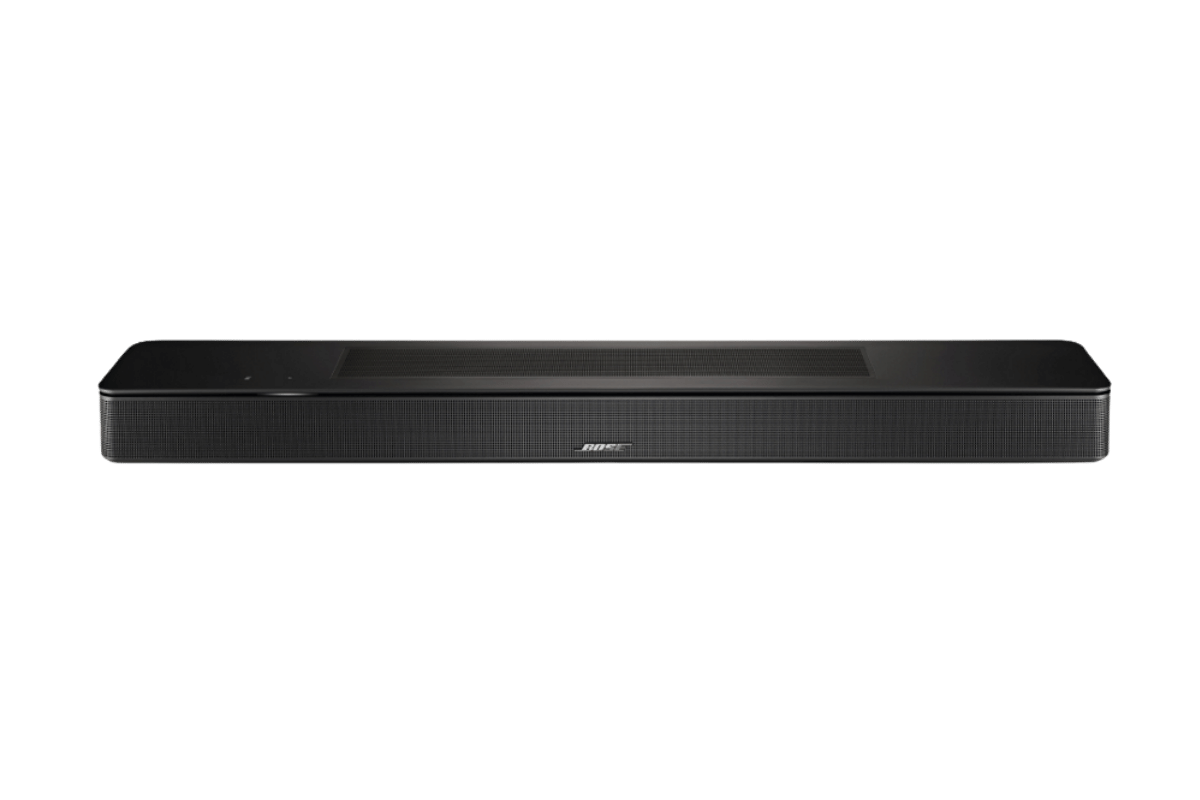 | 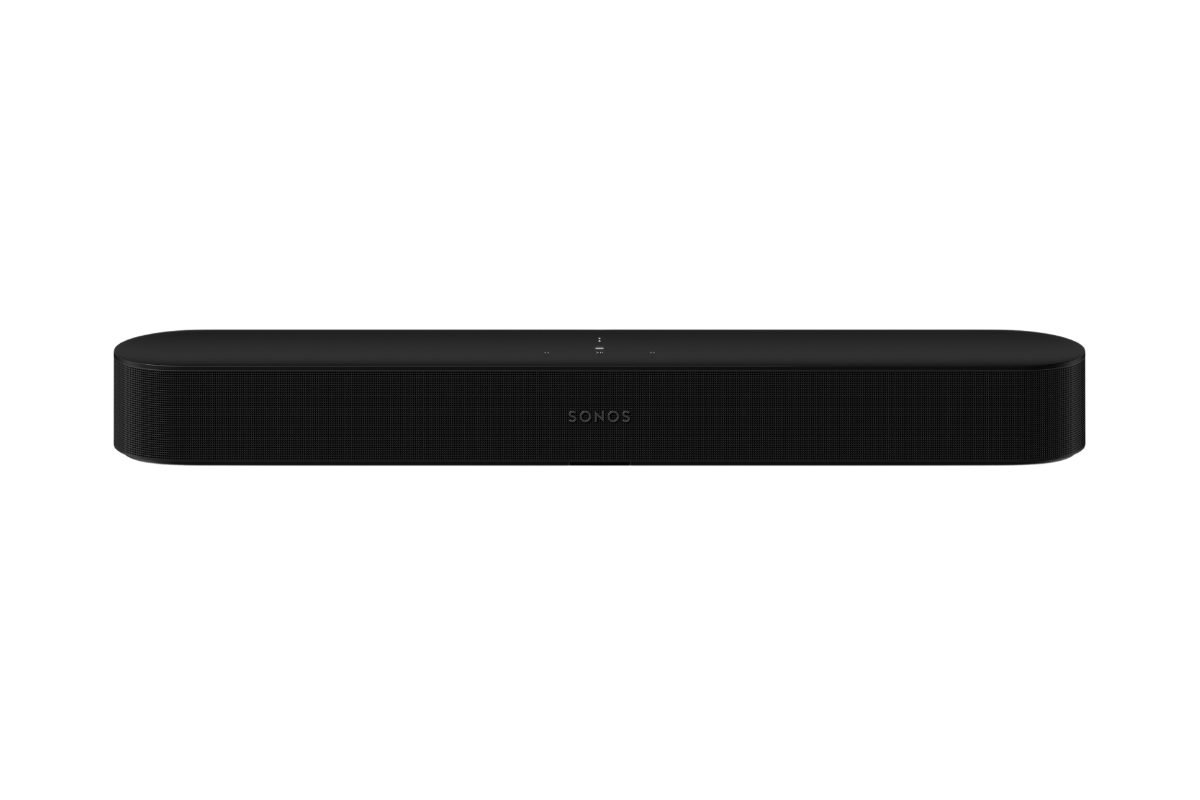 |
| Bose Smart Soundbar 600
RRP: £499.95 (see latest pricing) View Bose 600 | Sonos Beam (Gen 2)
RRP: £499 (see latest pricing) View Sonos Beam (Gen 2) |
Design
Before we dive into performance, we first need to take a closer look at the overall differences in design. After all, these soundbars are built to be at the front and centre of your space, so visuals is an important part of the buying process.
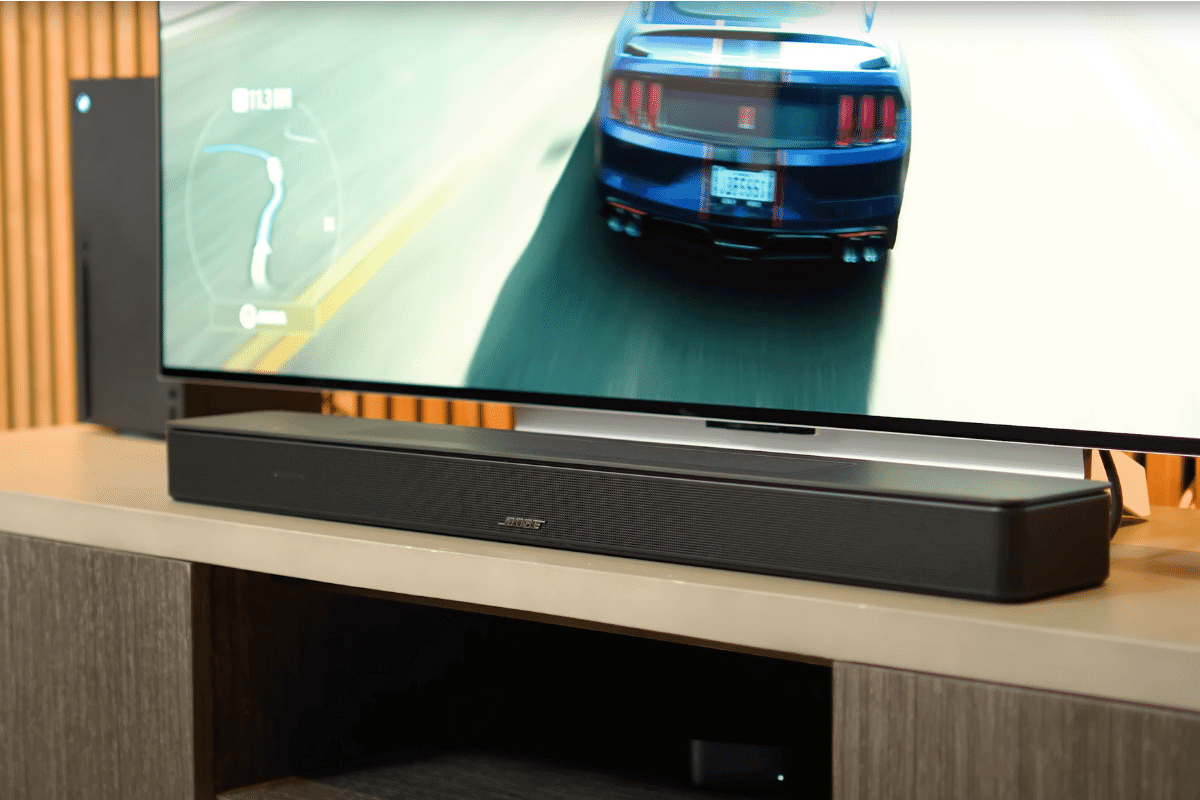 | 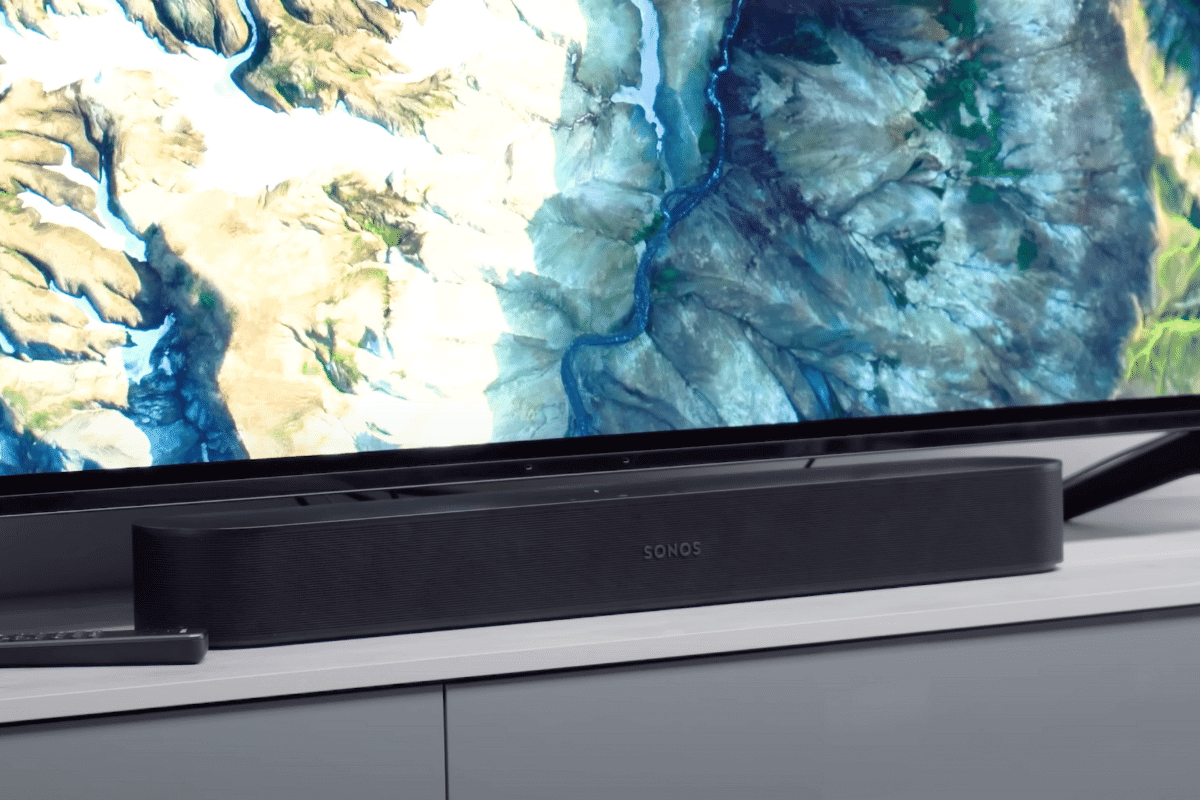 |
Straight out of the box, the most noticeable variation is their difference in shape. The Bose 600 sports a rectangular design which is considerably different to the Sonos Beam’s curved body. There isn’t a specific reason for this variation other than aesthetic solutions that accommodate the side-firing drivers in each soundbar.
Constructed with similar materials, both soundbars have a matte plastic finish with a metallic wraparound grille. However, the Bose 600 has the addition of a top panel grille which is home to a pair of upwards-firing drivers.
The Sonos Beam Gen 2 is available in both black and white, whilst the Bose 600 is only available in black. However, a huge benefit of both soundbars is their ability to fit seamlessly into any home due to their discreet design and compact size.
Although the Bose is slightly wider and deeper than the Beam, it is shorter, which may be something to keep in mind when making your decision. Both soundbars are very similar in terms of dimensions the Bose 600 comes in at 5.61 x 69.4 x 10.4 (H x W x D cm) while the Beam (Gen 2) differs very slightly at 6.9 x 65.1 x 10 (H x W x D cm).
Ultimately, we think that the design will split opinions and your final choice will come down to personal preference. However, if you’re unsure and want a second opinion. We think the Sonos Beam (Gen 2) offers a more sleek and modern aesthetic while the Bose 600 has a more traditional black box style.
Connectivity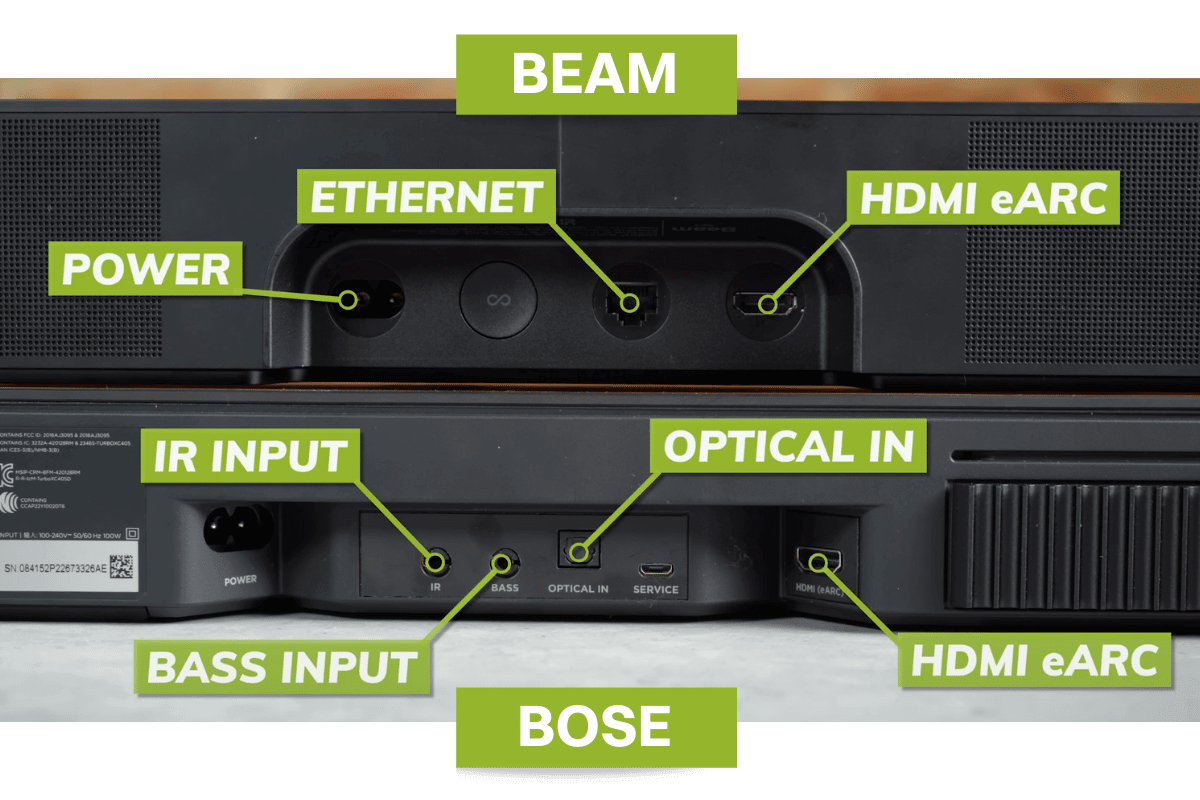
When it comes to connectivity, Sonos keeps it simple. The Beam has one ethernet port, a single HDMI (eArc) port and an optical adapter provided in the box. The Bose on the other hand has a much more extensive connections list consisting of IR, Optical, HDMI (eArc) inputs and a port to hard wire a bass module.
Both soundbars use WiFi to connect with their respective apps and have Apple Airplay 2 capabilities. But the Bose is also Bluetooth and Chromecast enabled whilst the Beam is not. So, if you’re the type of person who makes the most of Bluetooth connectivity or streams from an android phone outside of the app, the Bose could be the better option for you.
Controls & Useability
The Bose 600 and Sonos Beam (Gen 2) have some control capabilities on the soundbar itself. However, the Bose comes with a separate IR remote for control too.
When it comes to their app functionality, both the Sonos S2 and Bose Music apps are very user-friendly, making it difficult to pick which platform has the better interface.
We were particularly impressed with the EQ customisation options of the Bose 600. The ability to freely control the exact output from the height channel, treble and bass was a welcomed option. However, the centre channel adjustments stood out for us as a great feature and is definitely something that Sonos should take inspiration from in the future.
On the other hand, it must be noted that we did encounter some slight lagging when using the Bose App throughout our testing. So, although it isn’t a deal breaker for us this may be something to consider before you buy.
 |  |
The Sonos app gives its users a good level of customisation too. Adjustable bass and treble as well as night mode and speech enhancement mean that you can fine-tune the Beam to suit your listening environment perfectly. Sonos are renowned for their ecosystem and app functionality.
The simple nature of grouping rooms together and toggling different elements on and off is a prime example of the S2 app's intuitiveness. In our opinion, we think the S2 app is our preferred choice when it comes to useability, but only by the finest of margins.
We’ve also got to point out that for IOS users, the Sonos Beam has Trueplay Tuning capabilities too. Meaning that after analysing the way sound reflects off of your room's walls, furnishings and other surfaces. Your soundbar will adjust its output to provide a fine-tuned performance that precisely matches the acoustics of your space. This is one of our favourite features from Sonos and something we recommend taking into account if you’re an IOS user who's torn between these soundbars.
Internals
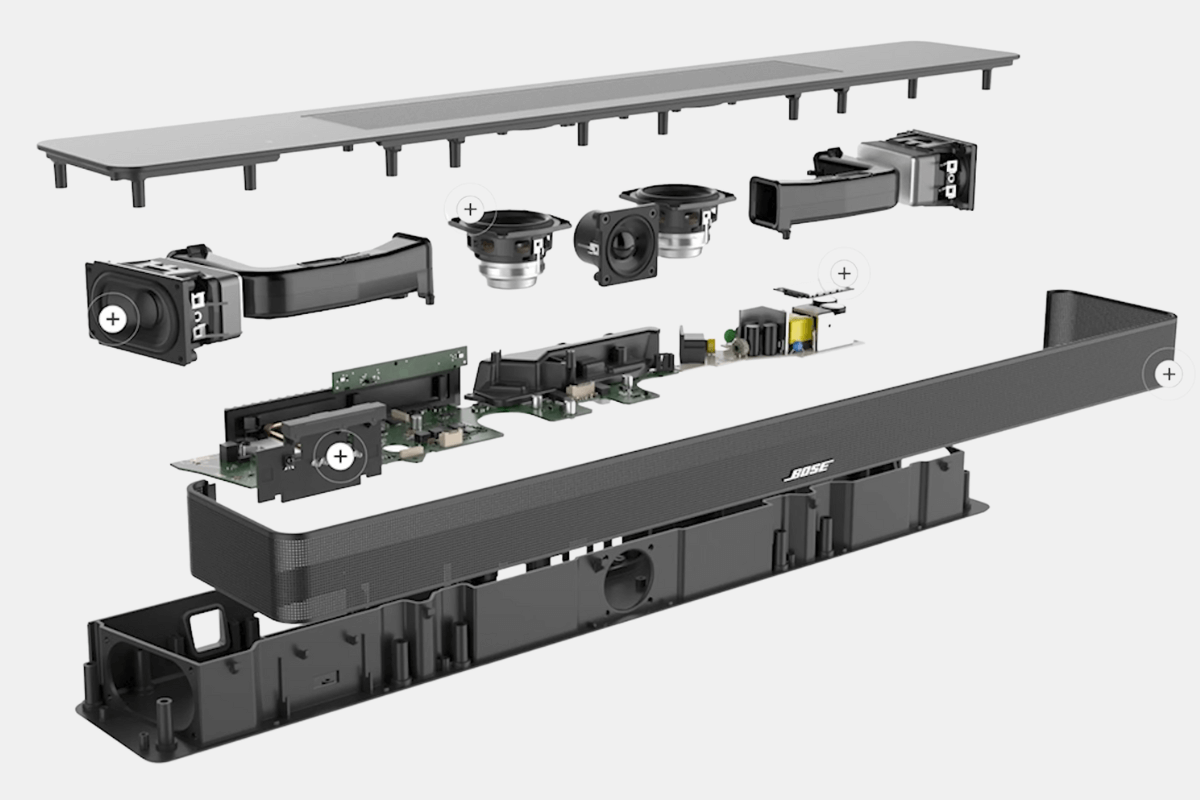 | 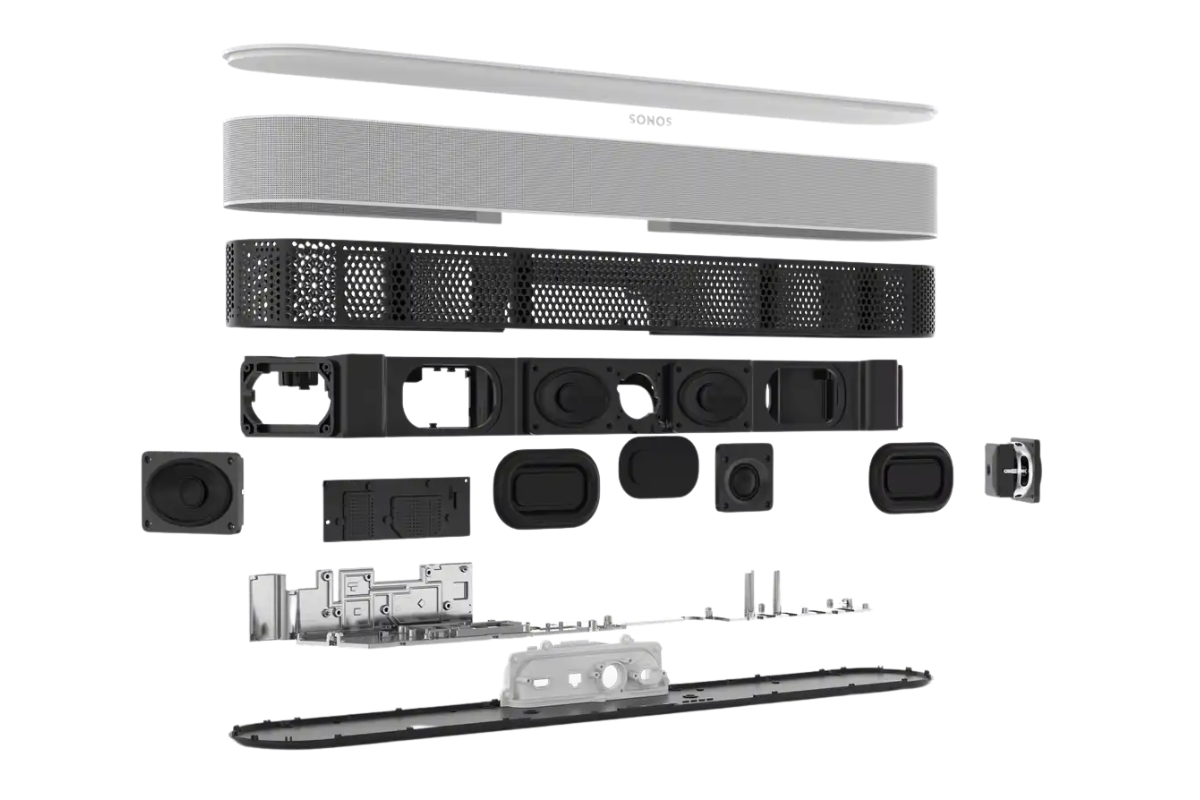 |
When it comes to internals, this is where we can notice one major difference between the two soundbars. While both are Dolby Atmos enabled, the height channels from the Sonos Beam (Gen 2) are simulated.
Internally it has 4 front facing woofers, two angled outwards, and a dedicated centre tweeter but no dedicated up-firing speakers. Instead, it uses virtual processing and psychoacoustics to simulate height channels and provide separation between ear level and overhead level.
The Bose 600 on the other hand has 2 dedicated up-firing speakers to deliver the overhead effects in Dolby Atmos tracks which work alongside 2 sideways firing speakers and a front centre tweeter.
Although we’re massive fans of the Beam and we think it does a brilliant job at simulating height effects. It will always struggle to compete with physical height speakers meaning the Bose 600 just edges it in this department.
Bose 600 vs Sonos Beam (Gen 2) Sound Performance
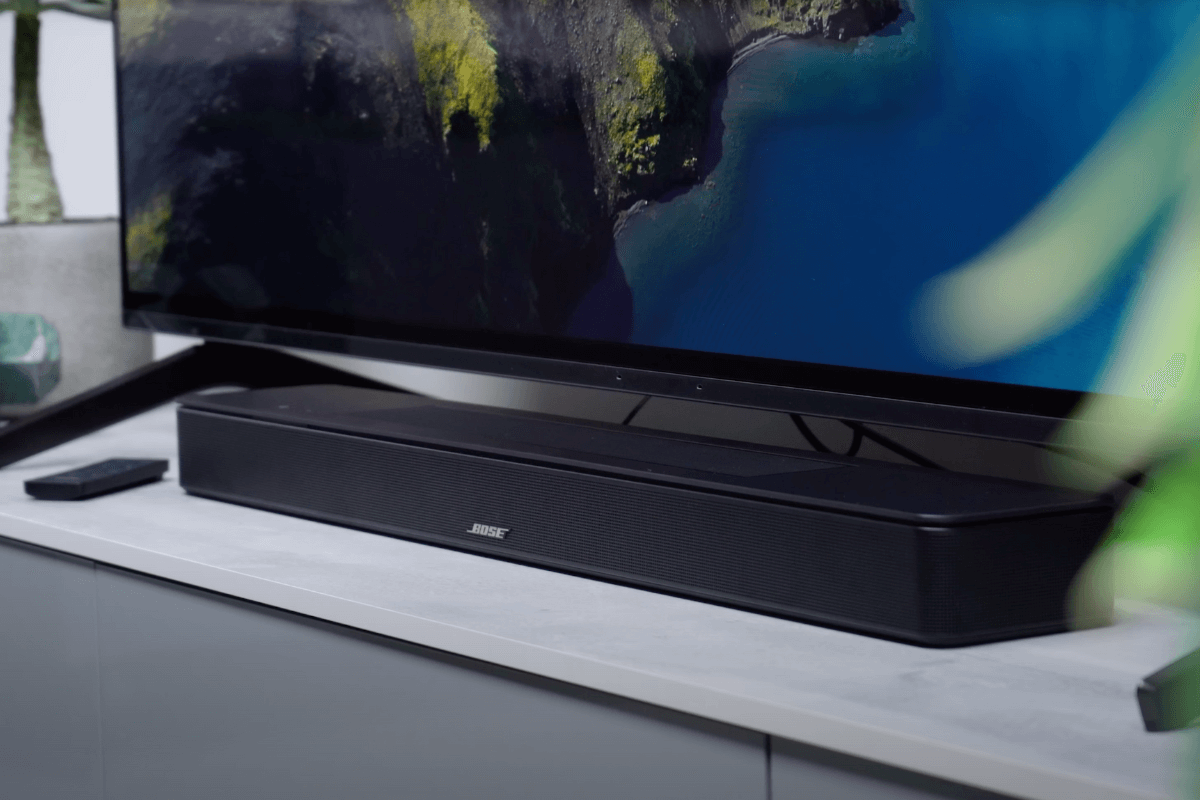 | 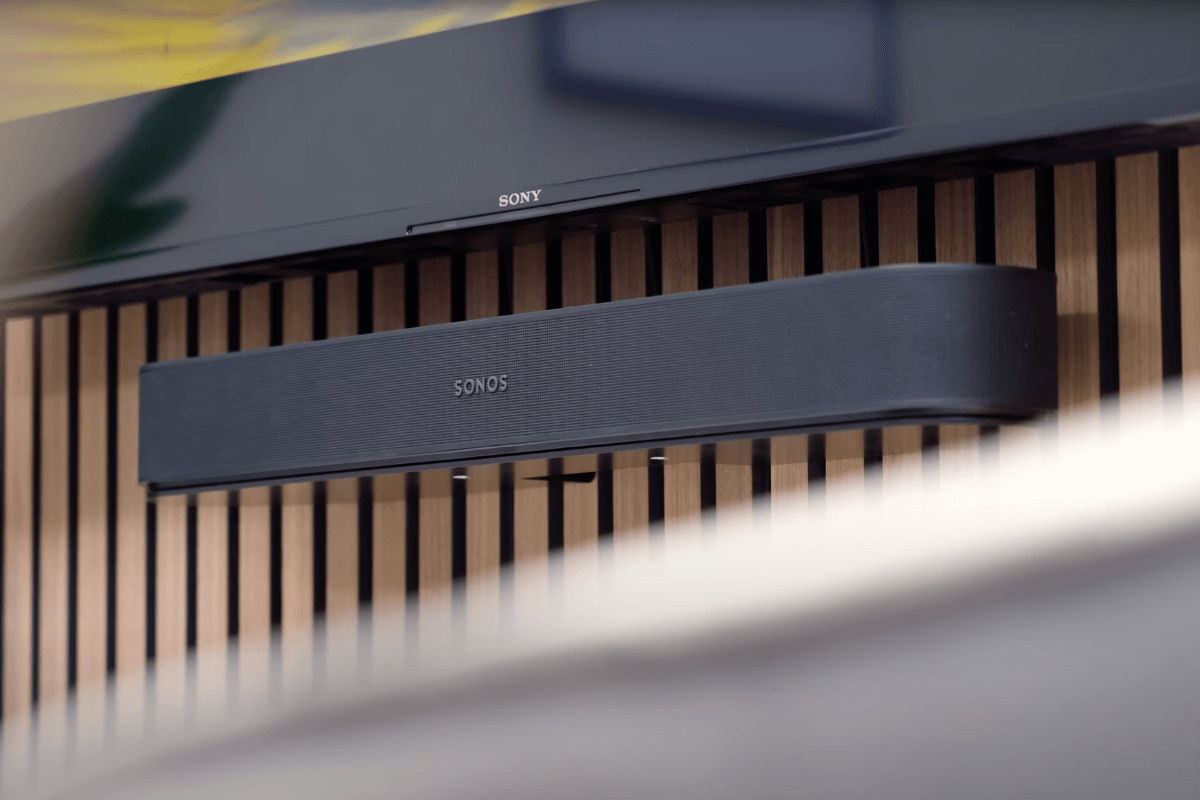 |
As always, we put both of these soundbars through their paces in a variety of different setups and locations to get a complete understanding of their optimum performance. Using a variety of different audio content from movies, TV shows, music and gaming and it's no surprise that this was one of our most closely contested comparisons to date.
Without a doubt, both of these soundbars are guaranteed to be a huge improvement on any TV’s audio output alone. Both produce audio with a size-defying soundstage that expands far beyond their form factor.
In terms of Dolby Atmos content, the upwards firing drivers on the Bose help to deliver an immersive audio experience that reaches a different dimension when compared with the Beam.
We were also left impressed by how well the Bose 600 handled complex scenes. When we watched Top Gun for example, any scenes that incorporated height channels and multiple layers were dealt with exceptionally well and didn’t feel overwhelming. The Bose also delivered impressively clean detailing that definitely enhanced our overall viewing experience.
However, the Sonos Beam (Gen 2) isn’t critically acclaimed without reason. Although it struggled to replicate the same overhead performance as the Bose with the lack of upward firing drivers, we would argue that the Beam outperformed the Bose when it came to vocals and bass performance.
That’s not to say that these weren’t strong elements on the Bose but the Beam pushed further ahead in these areas for us. The Beam's vocals and centre channel clarity are simply phenomenal and they are this soundbar's standout features.
When it comes to low-end weight, if we’re looking at performance straight out of the box, the low end frequencies felt clean and punchy on the Beam and just offered an extra oomph that was lacking when listening with the Bose.
However, you can tweak the bass performance on both soundbars using the app and we were able to replicate a similar low-end performance on the Bose 600 after playing around in the settings.
In terms of music performance, the Beam handles most genres well and offers balanced and punchy performance with the vocals being a standout feature yet again.
The Bose 600 also coped well with a variety of different genres. Providing an accurate performance which retained nice separation of the layers throughout. However, we did notice a slight lack of meaningful bass which sometimes did take away from the overall performance.
Add-Ons
There is the ability to add optional modules like a subwoofer to both soundbars which is a great option for enhancing sound quality. So, if you’re planning on expanding your system further, the benefits of either ecosystem is definitely something you should consider.
Sonos prides itself on being a simple to use interface that makes adding additional units to your setup a seamless process. Meaning you can add a Sonos Sub 4 or Sonos Sub Mini and two Sonos Era 100 or Sonos Era 300 rears to this soundbar wirelessly with ease. You can also now pair the Beam with a pair of Sonos Ace Headphones which is another great benefit.
The Bose ecosystem is less extensive but you do have the option to add a subwoofer and rears to this soundbar to expand your performance further. If you were to add the Bose Bass Module 500 you’re looking at an RRP of £949. So, £21 more expensive than the Sonos Beam and Sub Mini pairing (RRP £928). We would love to see how these setups stacked up against each other, but let us know if you’d like to see us test it out.
Sonos Beam & Sub Mini Bundle
Verdict
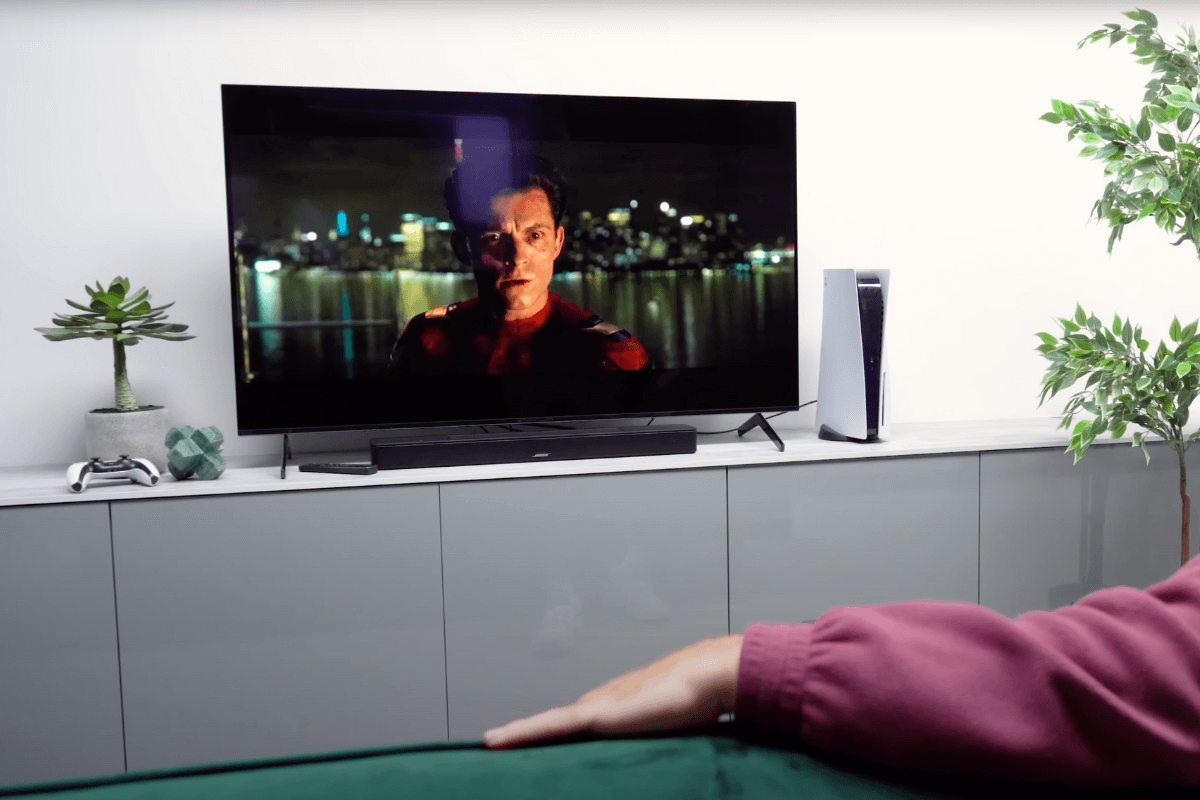 | 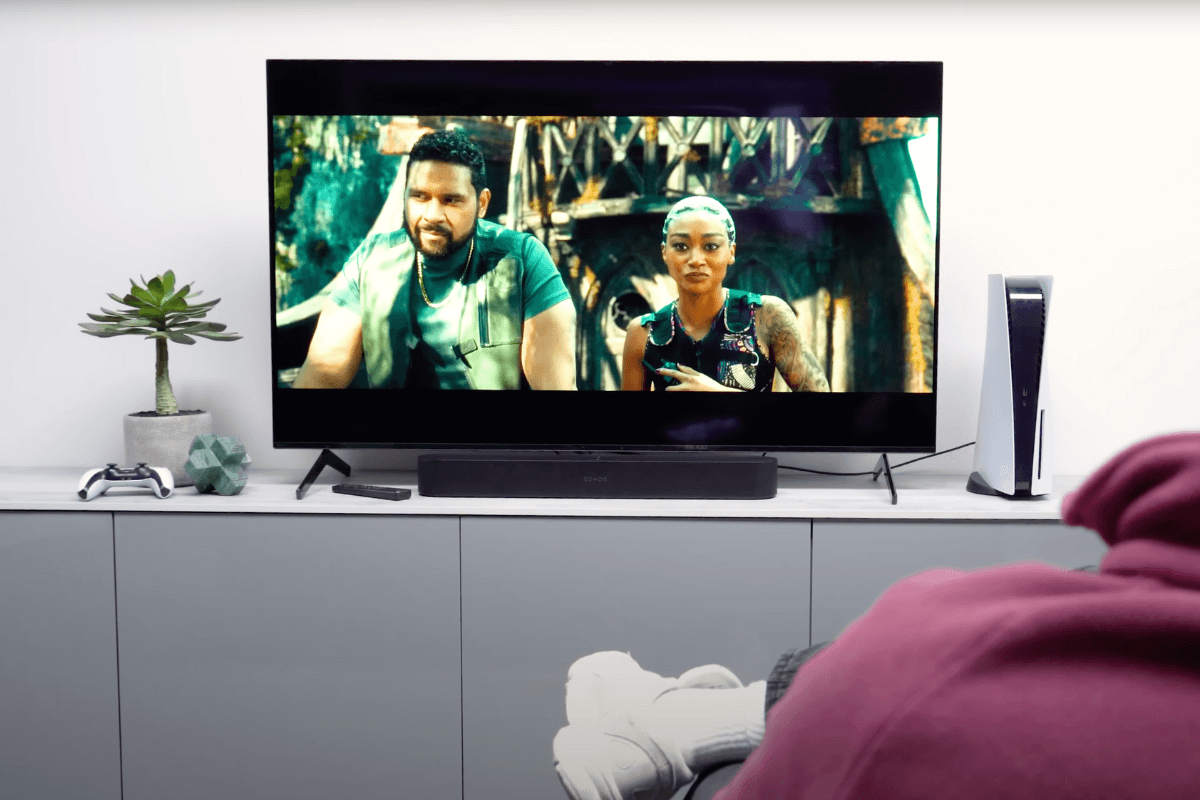 |
Taking everything into account, we have been left impressed by both soundbars and we think in their own right they’re great compact soundbar options that simply excel in different areas.
The Bose 600 offers a great level of immersion and offers Bluetooth connectivity, which is something the Beam lacks. Admittedly, the Beam does offer better vocals and bass when it comes to layered Atmos soundtracks. But, what the Bose lacks here, it makes up for with its physical overhead channel. So it's a close call!
Both soundbars offer pros and cons and so for us, there can't be one standalone winner. What ticks all of one person’s box won’t be the same for the next person so it doesn’t feel right to say one is better than the other.
For those wanting to know which soundbar we would pick if we had to, the Sonos Beam (Gen 2) slightly edges it. The differences in design and overall ecosystem benefits are the key factors in our decision on this one. However, what might come out on top for us may not for you and that’s the beauty of choice.
Hopefully, this comparison has helped you gain a better understanding of whether the Bose Smart Soundbar 600 or the Sonos Beam (Gen 2) is a better option for your setup. If you would like more personal advice then feel free to reach out to our tech guides who would be more than happy to help!
Other Useful Content
Video: Testing EVERY Sonos Beam (Gen 2) Surround Sound Setup
Video: Top 10 Sonos Soundbar Tips (Ray, Beam & Arc)
We hope you find this helpful, but of course, we realise that purchasing a new soundbar is a big decision, so we are more than happy to assist with any queries you may have.



